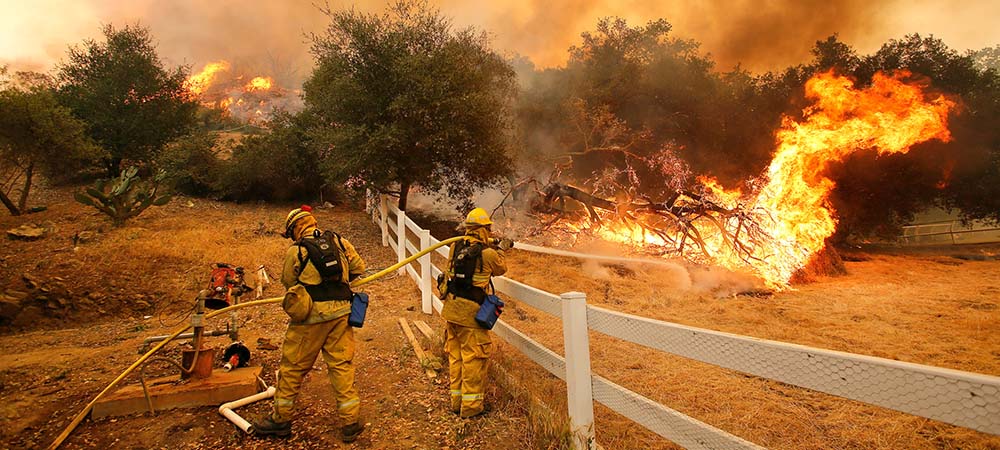
(Photo: Daria Devyatkina/Flickr)
CA FWD’s policy work groups are created in consultation with members of the California Stewardship Network (CSN) through a process that identifies the issues that matter most to civic leaders throughout the state. Every year, each work group identifies a set of priorities that are critical to advancing the mission of the group and of CA FWD. These priorities are presented during a working session at the California Economic Summit and integrated into the Roadmap to Shared Prosperity, charting an agenda for collective action to ensure California’s economy works for everyone.
California’s wildfire crisis stands as one of the state’s most serious challenges. Forests and wildlands have become so overgrown that the slightest sparks now trigger fires of unimaginable size and speed.
The costs are enormous, including loss of life, property damage, fire response and recovery, community and economic disruptions, harm to water supplies and other natural resources, and threats to health from spreading smoke. In 2018, the year the town of Paradise was destroyed by the Camp Fire, wildfires in California caused a staggering $150 billion in damages, with costs extending far beyond burned areas, according to research by the University of California, Irvine.
The risks are driven by a century of inadequate land management, ongoing drought, insect infestations, and climate change, and are exacerbated by more and more people living in or near the danger zones. The state has reported an estimated 4.5 million homes and 11 million people living and working in areas adjacent to dense flammable vegetation – known as the “wildland-urban interface.”
The California Economic Summit’s Resilient and Productive Landscapes work group is committed to advancing solutions to the crisis. In particular, the group has worked in recent years to support the principles outlined in the Summit’s 2019 Wildfire Call to Action. Those principles include dramatically increasing the pace and scale of proactive forest resiliency work – including mechanical and hand-thinning, prescribed fire, and vegetation management – to a level that will reduce the ignition and spread of megafires. Preparing for wildfires in this manner has been shown to be effective and worthwhile.
According to state policy, it is imperative to provide such treatment to at least one million forested acres annually to meet carbon and resiliency goals. Development of innovative wood products industries that make viable use of excess woody material is a critical element to this picture. These are not easy goals to achieve, with challenges including developing an adequate workforce, building necessary infrastructure, standing up new wood products industries, and streamlining regulatory hurdles. California Economic Summit partners have engaged in ongoing coalition-building and advocacy to encourage investment in this work.
During the 2022 California Economic Summit in Bakersfield October 27-28, the Resilient and Productive Landscapes work group will convene to continue addressing these issues and mapping out priorities and activities to advance solutions in the coming year. The work group is led by Glenda Humiston, vice president of UC Agriculture and Natural Resources, and Steve Frisch, president of the Sierra Business Council.

